- News
- Reviews
- Bikes
- Components
- Bar tape & grips
- Bottom brackets
- Brake & gear cables
- Brake & STI levers
- Brake pads & spares
- Brakes
- Cassettes & freewheels
- Chains
- Chainsets & chainrings
- Derailleurs - front
- Derailleurs - rear
- Forks
- Gear levers & shifters
- Groupsets
- Handlebars & extensions
- Headsets
- Hubs
- Inner tubes
- Pedals
- Quick releases & skewers
- Saddles
- Seatposts
- Stems
- Wheels
- Tyres
- Tubeless valves
- Accessories
- Accessories - misc
- Computer mounts
- Bags
- Bar ends
- Bike bags & cases
- Bottle cages
- Bottles
- Cameras
- Car racks
- Child seats
- Computers
- Glasses
- GPS units
- Helmets
- Lights - front
- Lights - rear
- Lights - sets
- Locks
- Mirrors
- Mudguards
- Racks
- Pumps & CO2 inflators
- Puncture kits
- Reflectives
- Smart watches
- Stands and racks
- Trailers
- Clothing
- Health, fitness and nutrition
- Tools and workshop
- Miscellaneous
- Buyers Guides
- Features
- Forum
- Recommends
- Podcast
TECH NEWS
 HELIUM-MAT-BLACK-GREY-MIPS copy_Small
HELIUM-MAT-BLACK-GREY-MIPS copy_SmallLazer add to MIPS helmet lineup + more range updates
Lazer are adding to their range of helmets that feature MIPS – Multi-directional Impact Protection System – for 2015 and we have news of other range changes for 2015.
MIPS is a Swedish concept from a company that specialises in preventing head injuries. The idea of MIPS is that the helmet’s shell and liner are separated by a low friction layer so the two parts can move separately. The low friction layer is designed to absorb part of the impact and thereby reduce the rotational forces to the head.

“Most bicycle crashes are oblique (occur at an angle) [and] these kinds of impacts create rotational violence to the brain, which in turn can cause the most severe brain damage,” according to Lazer.
“The MIPS system imitates the natural protective properties of the human brain and gives proven reduction of rotational forces. It doesn’t interfere with helmets’ existing protective properties, it only adds protection to the most common type of impacts and against the most severe type of brain injuries.

“Lazer has developed this technology in collaboration with some of the largest universities in Sweden and has tested this with computer models and real life testing.”
Other bike helmet brands such as Scott, Smith and POC also incorporate MIPS technology, as do motorcycle and snow sport brands.

MIPS is available in four Lazer helmets for 2015: Helium (£169.99), Beam (£49.99), Nut’z (£49.99) and P’Nut (£49.99).
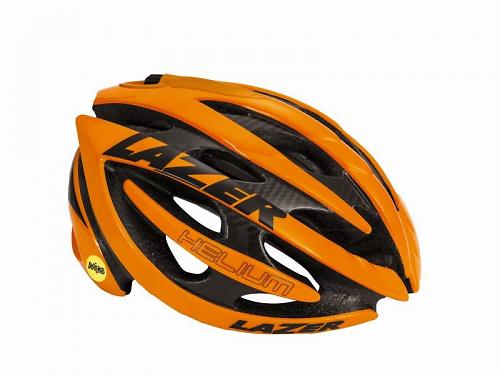
The Helium is a high-end in-moulded road helmet that is also available with a standard Rollsys retention system (£149.99) while the Beam is an urban-style helmet, also in-moulded. The non-MIPS version of the Beam is £39.99.
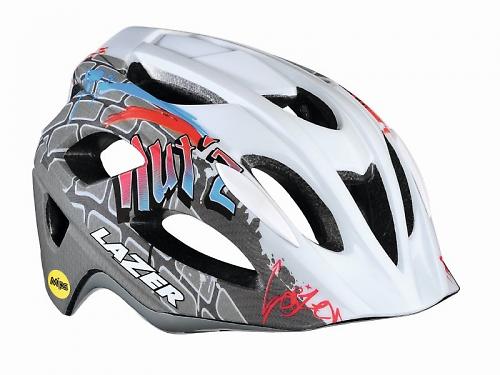
The Nut’z is a kids’ helmet that’s available in several child-friendly finishes and you can get Nutshell plastic covers (£14.99) to fit over the top (handy if you want to use the same helmet for one child and then pass it on to another, for example).

The P’Nut is similar but for babies.
Genesis LifeBEAM

The Genesis LifeBEAM (£199.99) incorporates a sensor within the head band to monitor your heart rate. It’s a really interesting idea that does away with the need for a heart rate strap around your chest.
The existing version of the helmet (already available) sends your heart rate via ANT+ only but future versions will use both ANT+ and Bluetooth so that it can speak to more devices.
Cappuccino Lock
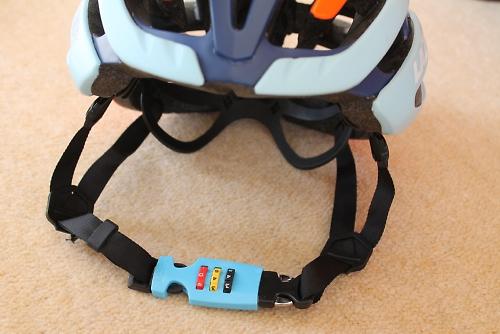
The Cappuccino Lock (£14.99) isn’t intended to provide you with the ultimate in bike security but it’s a lightweight combination lock that you add to your helmet straps (it’ll work with Lazer helmets with a 'Z' moulded into the buckle) to deter an opportunist thief.
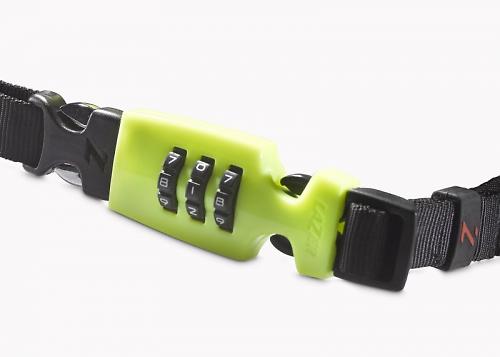
Your helmet straps provide a low level of security, obviously, but the idea is to stop anyone walking off with your bike (or your helmet) while you nip into a shop or grab a mid-ride coffee (hence the name).
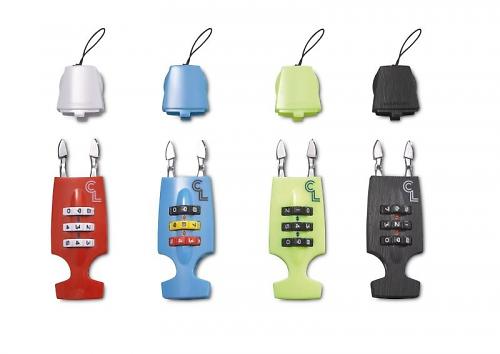
Lazer are considering adding Kevlar to helmet straps at some time in the future as a means of adding to the security.
Tardiz

Lazer’s Tardiz triathlon-specific helmet (£149.99) will come with an eyeshield as standard for 2015.
The earpads flex so that the helmet is easy to put on and take off in transition, and the ‘magic buckle’ is also very quick to use.
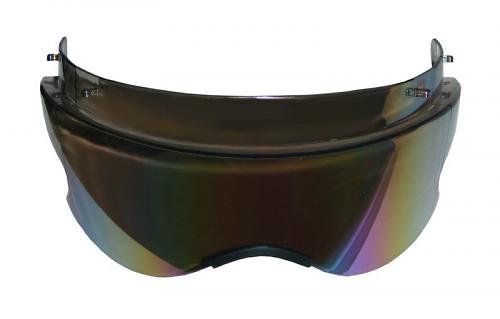
The Tardiz comes with six vents and you also get Lazer’s Aquavent in the top. This allows you to spray water in which passes through channels that distribute it over your head but not onto your face.
We’ll have more Lazer news from Eurobike later in the month. In the meantime, get more info from www.lazersport.co.uk.
Mat has been in cycling media since 1996, on titles including BikeRadar, Total Bike, Total Mountain Bike, What Mountain Bike and Mountain Biking UK, and he has been editor of 220 Triathlon and Cycling Plus. Mat has been road.cc technical editor for over a decade, testing bikes, fettling the latest kit, and trying out the most up-to-the-minute clothing. He has won his category in Ironman UK 70.3 and finished on the podium in both marathons he has run. Mat is a Cambridge graduate who did a post-grad in magazine journalism, and he is a winner of the Cycling Media Award for Specialist Online Writer. Now over 50, he's riding road and gravel bikes most days for fun and fitness rather than training for competitions.
Latest Comments
- Steve K 3 sec ago
That sounds a lot what anti-cycling people say about cycling.
- mdavidford 2 min 37 sec ago
Er - the Proviz has a mahoosive reflective panel right across the 'bum drop'.
- David9694 59 min 53 sec ago
Calls for Oxfordshire transport chief to resign blocked...
- Mr Blackbird 1 hour 19 min ago
Depends how you ride them. The current trend among many pros is to ride in a track style looking down at the front wheel. Ok for racing on closed...
- Bungle_52 3 hours 24 min ago
That one was completely different though, it was a driver not a car as in the other 3. So 1 in 4 of the stories manage to follow reporting guidelines.
- Rendel Harris 5 hours 16 min ago
Absolutely they could have. Tarmac is a petroleum-based product and its surface can be very oily when it's newly laid. This is particularly the...
- ROOTminus1 11 hours 18 min ago
I'm glad the article went into more detail and cleared things up, the headline had me worried that some autonomous building had run rampant and...
- mark1a 11 hours 37 min ago
Still here, just showing a few signs of wear and tear. Hopefully still serviceable for some years to come.
- Rendel Harris 12 hours 21 min ago
How can you know that you are "equally fearful" as "any female cyclist"? There is no possible way of quantifying such emotions and female cyclists...
- chrisonabike 12 hours 53 min ago
I think it would be fairer to blame the moon - as in "my client is a loony".
Add new comment
6 comments
Talking of non-chest strap heart rate monitors, I use a MioLink heart rate monitor wristband - Ant+ and Bluetooth Smart - great piece of kit. I had wondered about the Lazer method, but if I wear a hat underneath my helmet I assumed the heart rate sensor would not work ... plus, the Mio was a cheaper option.
Nice idea. I guess it would work with a Garmin if it's Ant+ compliant?
Yes, indeed ... I was lucky enough to be bought a Garmin 810 for my birthday. Works like a charm.
I was toying with the idea of the Mio, but it was many times more expensive than a chest strap and had a minute battery life (9-10 hours, those pesky LEDs I guess). Add to that I don't actually notice the chest strap when i'm out (bog standard Garmin one) and, for me, it was the better choice. YMMV clearly.
Agreed ... it is personal opinion and I just hate having my chest restricted, particularly having caned it up some hideously steep Cotswold climb ! I tried a chest strap many years ago. Mio is probably twice the price of a Garmin strap and more than twice the price of some others. The Mio is nice and neat, though - unobtrusive and really quick and easy to charge from a USB port. I never ride for 9-10 hours at a time, so that is not an issue for me, personally.
Now, the idea of a HR monitor without having to wear a chest strap (which is the thing that puts me off) is really interesting.